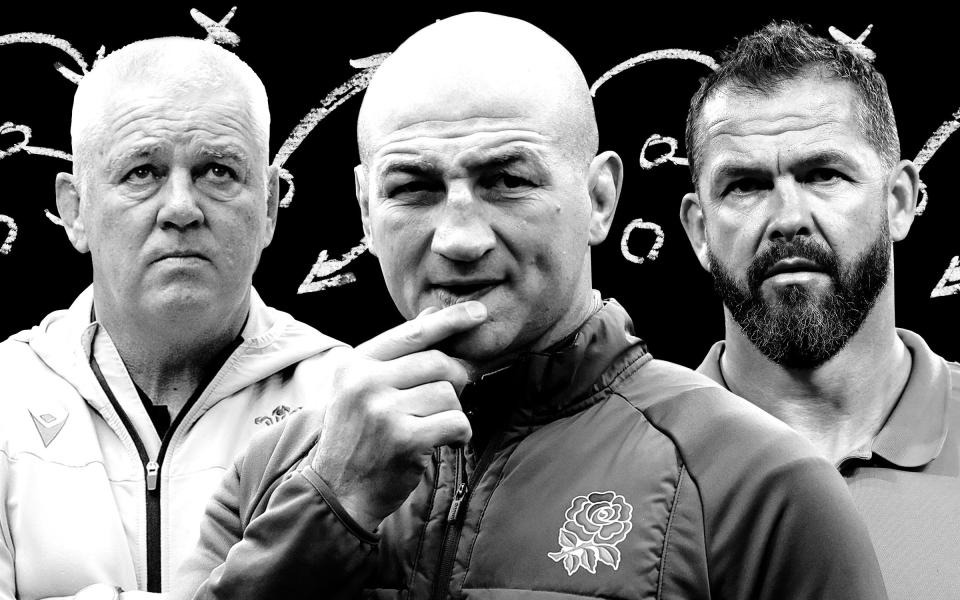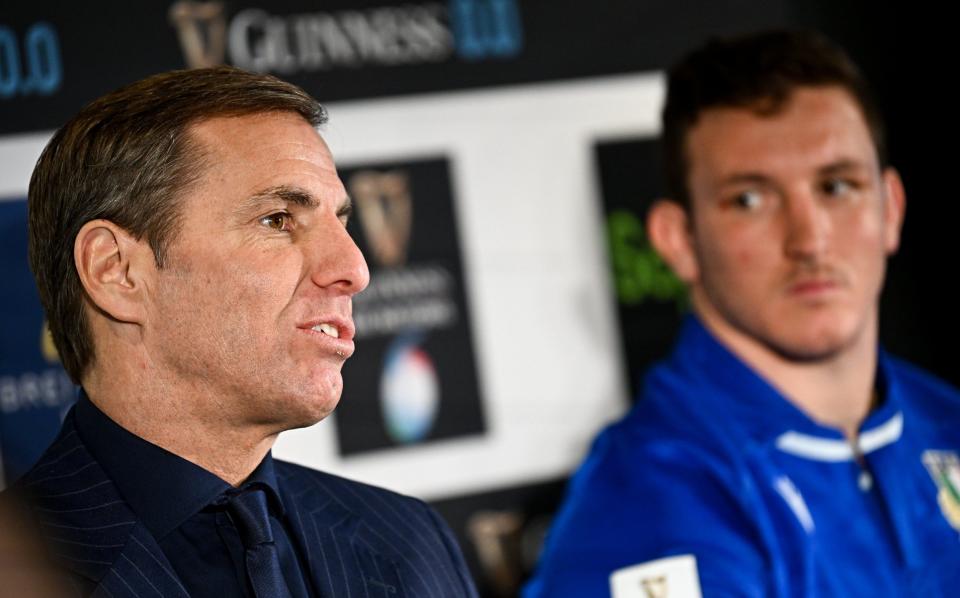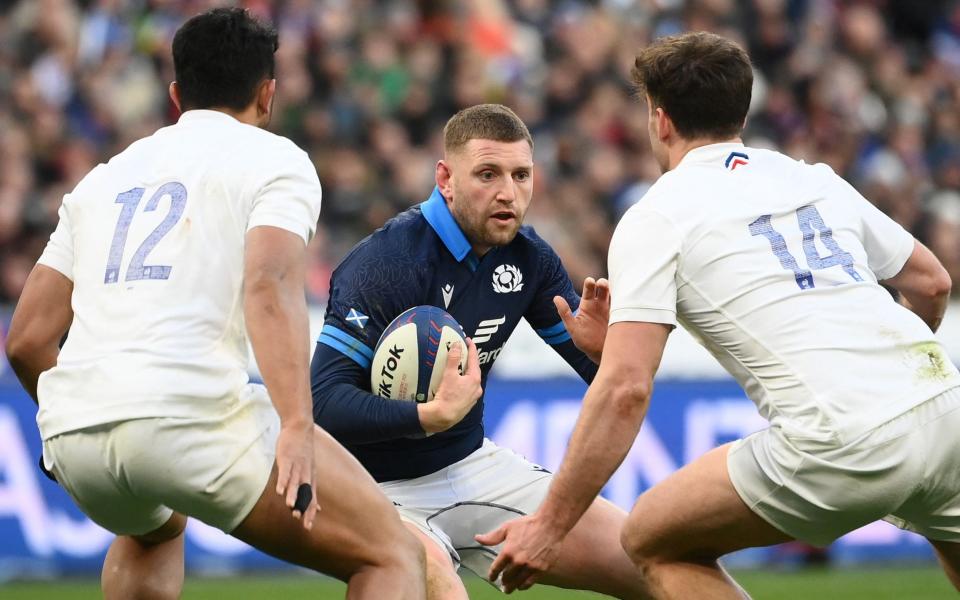The tactical questions facing every team in the Six Nations

Every four years, the Six Nations after a World Cup carries a sense of renewal and added excitement, as well as intrigue about how each side will play. Here is a tactical question for each side ahead of this tournament.
England: How do they rebalance a Lawesless pack?
Steve Borthwick wants to add layers of nuance to England’s game and it would be pretty safe to assume that attacking incision is close to the top of the list. His first year as head coach, he has stressed, formed a foundation from which to build. England managed 13 tries during last year’s Six Nations, a tally that bettered only those of Wales (11) and Italy (nine). Their mark of line-breaks per game, though, was bottom of the pile. Everyone averaged more than England’s measly mark of 3.2, according to Stats Perform. Ireland were top by that metric, with 7.8. Andrew Strawbridge’s impact on England’s attack will be just as fascinating, as that of Felix Jones on defence.
To give that attack a chance, Borthwick knows he must assemble a balanced and belligerent pack. And of his high-profile absentees, Courtney Lawes will probably require the most work to replace. Lawes, presently in career-best form, started 21 of England’s 47 Tests between the start of 2020 and end of 2023 at blindside flanker. Lewis Ludlam (9), Tom Curry (5), Mark Wilson (4), Lewis Ludlow (2) and Sam Simmonds (1) also appeared there. Those five are out of the picture for various reasons, though Maro Itoje (4) and Alex Coles (1) are part of the current squad.
Options in the back five have been cut down further because of injury and illness, with George Martin and Nick Isiekwe out of the opener in Italy. Coles could join Itoje and Ollie Chessum in the starting line-up if Borthwick wants to retain one ‘hybrid’ forward to strengthen the line-out. Seven of England’s 13 tries in the 2023 Six Nations originated from lineouts and their success rate of 92 per cent on their own throw was the cleanest in the tournament.

Ethan Roots offers flinty carrying to complement Ben Earl and is a prominent jumper for Exeter Chiefs. Tom Pearson has been developing his line-out skills and could shift across from openside, though he has only started at blindside flanker twice in his professional career. Chandler Cunningham-South, another tackle-breaker with intriguing potential, would be a curveball. Traditionally, games against Italy have been an opportunity to experiment. But a win is vital and Borthwick will not want to compromise the set-piece solidity that characterised England’s 2023. Given Joe Marler, Jamie George and Dan Cole look likely to feature for significant periods, England need plenty of mobility elsewhere.
One does not simply pluck out a like-for-like replacement for Courtney Lawes. Borthwick can only aim to ensure that the assets Lawes added – line-out jumping, breakdown spoiling, dominant tackling, tip-passes on the gain-line – are taken on by others.
France: Can they copy and paste the brilliance of Bordeaux?
Inevitably, the narrative of this Six Nations has revolved around the players that will miss the tournament for various reasons: retirement, injury, the NFL and the Olympics. As the sport’s brightest star, Antoine Dupont casts a big shadow. Fabien Galthié, however, has stressed that France have been prepared for their supreme scrum-half to take a sevens sabbatical.
France have a player pool of enviable depth and quality. But the loss of their front-line half-backs, Dupont and Romain Ntamack, will surely cause them to tap into existing cohesion – heralded as a chief strength of Ireland’s provincial system. That would mean a backline guided by Maxime Lucu and Matthieu Jalibert with Damian Penaud and Louis Bielle-Biarrey on either wing. All four are colleagues at Union Bordeaux Bègles, who have been playing wonderfully.
As figures such as Eddie Jones have lamented, most teams look very similar these days. It is difficult to produce something genuinely new. Bordeaux boast big, explosive athletes and counter-attack fluently when opportunities arise. Across four pool games in the Champions Cup, they plundered 26 tries and 172 points, averaging 8.5 line-breaks per game (second in the competition) 10.8 offloads (third) and 563 running metres (fourth) according to Stats Perform. Penaud’s first try in the 55-15 thrashing of Saracens, instigated by deep, sweeping passes and Jalibert’s dancing feet, was enchanting and archetypally French:
There have also been unconventional moments. Noel McNamara, who has previously overseen Ireland age-grade sides and counts Joe Schmidt as a big influence, is Bordeaux’s attack coach and one intricate strike play against Bristol Bears was particularly eye-catching. From a scrum just outside the opposition 22, Lucu fed Jalibert. The latter passed to Yoram Moefana and circled his inside centre, but this was a decoy. Penaud arrived in front of Jalibert to take a late pass, bursting up the middle to set up Bielle-Biarrey:
A line-out peel incorporating Bielle-Biarrey almost flummoxed Saracens, too. In short, the Bordeaux cohort will give Patrick Arlettaz, Galthié’s new attack coach, plenty to work with. Lucu may not be able to bounce away from rucks and slip three tackles, but he is a slick link man. His assured kicking will make up the vital – and perhaps underrated – meterage that Dupont’s boot has given France. Jalibert, still 25, has his best years ahead. Penaud is already a rockstar. Bielle-Biarrey will be better for the tough experience of the World Cup quarter-final, when South Africa went after him in the air. Moefana is so good that he could break up the midfield partnership of Jonathan Danty and Gaël Fickou. Galthié is thought to be considering him on the wing instead of Bielle-Biarrey. The antidote for no Dupont? Being more Bordeaux.
Ireland: Can they replace the influence of Mack Hansen?
Steve Borthwick need only look as far as Ireland for vindication of the value he places in the line-out. An area that had been iffy for a while eventually cost Andy Farrell’s men last year. They lost two of their own throws in the absorbing World Cup quarter-final against New Zealand and failed to convert a maul chance in the 70th minute, with Jordie Barrett somehow preventing Ronan Kelleher from touching down.
Farrell has his own back-five headaches, with Joe McCarthy and Ryan Baird straining to break up the established order. Returning to that World Cup quarter-final loss, it might be easy to forget that Mack Hansen limped off in the 56th minute. As they laid siege to the All Blacks during a nerve-shredding finish, Ireland would have been more dangerous with their roaming right wing. Hansen, a playmaker with pace and the ability to pick a pass, had become extremely important to the success of Farrell’s multi-faceted phase attack.
During last season’s Six Nations, as Ireland landed a Grand Slam, he created 1.4 line-breaks per 80 minutes according to Stats Perform. Only two players, Finn Russell (2.25 break assists per 80 minutes) and Romain Ntamack (1.53) were more prolific. At Murrayfield in round four, Ireland found themselves in a decidedly sticky patch with injuries decimating their starting pack. Close to the hour mark, having already scored himself in the first half, Hansen stepped up at first-receiver and flashed a subtle dummy towards Hugo Keenan before sending Jack Conan on the outside with a skip-pass:
In isolation, the loss of Hansen for this Six Nations, because of a dislocated shoulder sustained in a win over Munster earlier this month, would have been damaging. Then you factor in how the 25-year-old’s absence exacerbates that of Johnny Sexton. The vision and intuition of Hansen would be a crutch for a relatively inexperienced fly-half, such as Jack Crowley. On top of all that, Jimmy O’Brien is recovering from a neck issue and will be unavailable for the duration of the upcoming tournament. Keith Earls and Andrew Conway have joined Sexton in retirement, too.
O’Brien is another resourceful wing who is comfortable on the ball and confident enough to swing in-field to contribute. In that respect, he is a suitable deputy for Hansen. Consequently, his injury will have required Ireland to examine the balance of their backline and consider what sort of right wing they want. When two players in the same position of a similar profile are ruled out, selectors are required to think on their feet. It is a mark of Hansen’s influence that some recommended shifting Garry Ringrose out wide from the midfield rather than fielding a specialist wing. That contingency would add another ball-player to the back three. Ringrose filled in there in the World Cup against Scotland when Hansen went off. Jamison Gibson-Park then needed to move from scrum-half to the other wing after James Lowe made way.
As it happens, reports have indicated that Ringrose could miss the tournament opener in Marseille with a shoulder issue anyway, leaving the sparky Calvin Nash of Munster, a try-scorer against Exeter Chiefs and Toulon in the Champions Cup this season, to start. Ireland have demonstrated impressive adaptability over recent years. Hansen’s loss, compounding those of Sexton and O’Brien, presents another challenge.
Italy: How will Quesada galvanise what Crowley built?
It has been a strategic rollercoaster for Italy over the past three Six Nations campaigns. In 2021, under Franco Smith, their tally of 2,841 kicking metres was the tournament’s lowest. Kieran Crowley arrived for the next season, and only France (5,419m) kicked further than Italy (4,534m). Last season, Italy were back to the bottom of the pile by this metric. Their mark of 3,021m was 1,058m fewer than any other side.
As an illustration of Italy’s expansive style in the 2023 Nations, they were the only team to average over two passes per ruck and completed 975 passes; 70 more than anyone else, according to Stats Perform. Their total of running metres, 2,170, did surpass Wales (1,815m) and England (1,963m), but fell short of Scotland (2,316m), France (2,452m) and Ireland (2,674m). All that suggests that they lacked two things: pragmatism in the territorial exchanges and penetration with ball in hand.
Gonzalo Quesada describes himself as an “Anglo Saxon thinker”. He has vowed to solidify Italy’s defence while ensuring that Ange Capuozzo and co are still empowered to run. Among the most misleading statistics from the World Cup was that Michele Lamaro’s men finished the tournament with a tackle success rate of 87.1 per cent; superior to those of Ireland, South Africa and England. In truth, New Zealand and France toyed with Italy in the final pool matches, scoring at will.

Quesada, who will be buoyed by form of Benetton in the United Rugby Championship and the Challenge Cup, has identified the set piece and defence as two priority areas. We can expect kicking to tie everything together and his selection at scrum-half, where Alessandro Garbisi and Martin Page-Relo are vying with Stephen Varney, will be pivotal. Manuel Zuliani, who always seems to add verve from the bench, must be close to a start in the back row, too.
Scotland: Can they stop the poor patches?
“The best of us beats any team in the world.” It was one of the headline soundbites from the stirring trailer of ‘Six Nations: Full Contact’ on Netflix. Uttered by Gregor Townsend, it might have ruffled a few feathers. But the potential of this Scotland side is undeniable. Frustrating lapses, however, have stopped them fulfilling it.
Last season, on the back of wins over England and Wales, they were overwhelmed in the first quarter at Stade de France. Scotland conceded three tries, losing Grant Gilchrist to a red card in the middle of that maelstrom. At the World Cup, their forwards hung in doggedly to give themselves a shot at upsetting South Africa. Then the Springboks scored twice in four minutes early in the second period. Finn Russell could not quite find a way back by outmanoeuvring Jacques Nienaber’s suffocating blitz defence. A month later against Ireland, a horrible first half undid Scotland.

Telegraph Sport understands that Townsend has identified three key areas in the build-up to this Championship. He wants the team to be able to regain momentum after setbacks. There has also been a focus on their attack being able to react and adapt to what a defence is doing well; South Africa using shooters to flood the 13 channel in Marseille, for instance. Darcy Graham’s injury is far from ideal, though Huw Jones has been excellent. Finally, the Scotland defence will be urged to be more “offensive”. Rory Darge, named as a co-captain alongside Russell, will be a figurehead in more ways than one.
Set-piece security is one way to control a game’s momentum. Zander Fagerson’s importance was huge even before WP Nel went down with a neck injury. Now it is immense. Last year’s line-out return of 85 per cent has to be improved, too. In truth, any sort of ugly win will do in Cardiff. Scotland have not prevailed at the Principality Stadium since 2002; an unwanted record that must be dismissed for them to make progress.
Wales: A blank canvas for Warrenball 3.0?
Warren Gatland relishes tournament play and Wales made a good fist of the World Cup. They outlasted Fiji, reduced Australia to tears and should have reached a semi-final by beating Argentina. A failure to convert line-breaks and to secure line-outs saw them squander a 10-0 advantage against the Pumas.
Since then, having already seen Alun Wyn Jones and Justin Tipuric bow out, Wales have lost more influential players. Dan Biggar has retired from international duty, Louis Rees-Zammit has relocated Stateside and Jac Morgan is recovering from knee surgery. Gatland has something of a blank canvas again. His choice of captain, the 21-year-old Dafydd Jenkins, exemplifies as much.
Typically, Gatland has cut his cloth as a coach, playing to the strengths of a small player pool. Two darting scrum-halves, Gareth Davies and Tomos Williams, stand out from this Wales squad. Plenty of sniping from those two should alleviate pressure on Sam Costelow, a promising yet green fly-half. Of course, Gatland also enjoys direct carrying and the hefty Mason Grady will be a weapon whether he features at wing or centre. Cardiff used him craftily in this try-scoring line-out move against the Stormers:
Tommy Reffell’s elite scavenging should enhance the defensive system of Mike Forshaw, but Wales were bottom of the charts for scrum success (81 per cent), line-out success (85 per cent) and penalties conceded (a mammoth 12.6 per game) in last season’s Six Nations. Whatever the plans for the latest Gatland chapter, accuracy in those fundamental areas is non-negotiable.

 Yahoo Sport
Yahoo Sport 





































